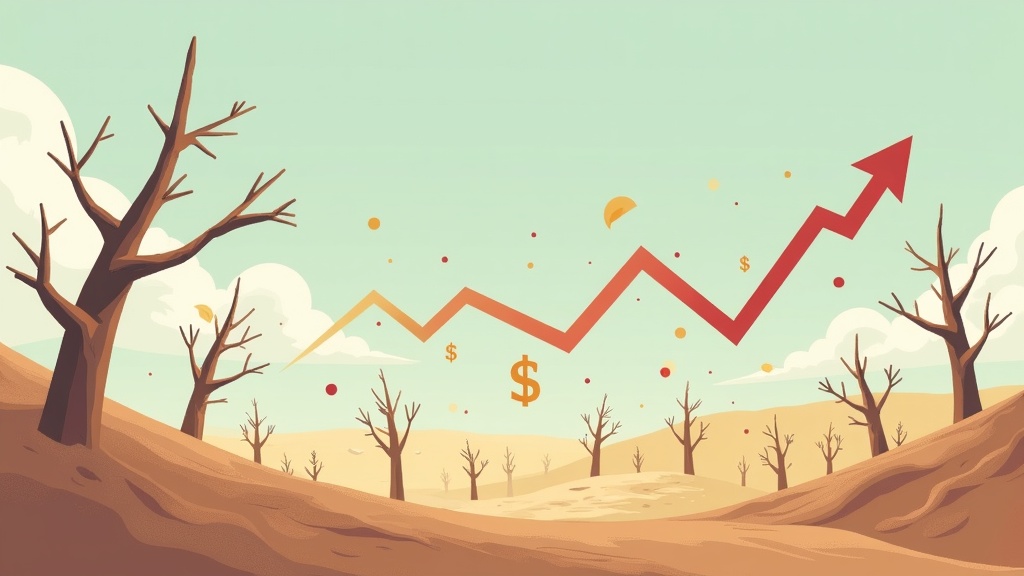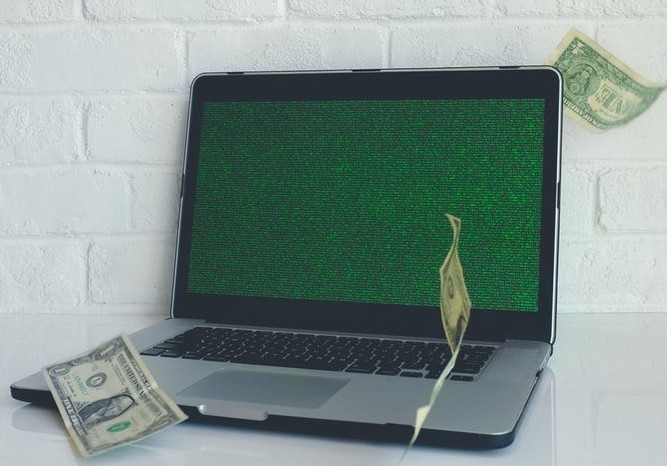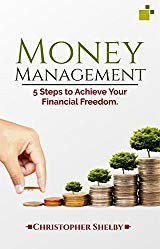Surviving an economic meltdown takes some real strategy and a solid plan. Most folks worry about their jobs, savings, and ability to pay bills when the economy tanks, and that’s totally understandable. Recoveries can take a long time, and uncertainty in the markets can be stressful even for those who feel prepared. I’m going to share my approach to staying afloat during tough economic times with steps and tips that are practical and easy to understand.

Understanding Economic Meltdowns and Why Preparation Matters
An economic meltdown usually means widespread job loss, businesses shutting down, prices for goods changing rapidly, or savings losing value. While they don’t happen every year, they hit communities and families hard when they do. History’s seen several, such as the Great Depression in the 1930s or the Global Financial Crisis in 2008. Each one left a mark on everyday people, forcing them to come up with new ways to cope.
Learning why these downturns happen can help spot trouble signs early. Things like stock market crashes, banking problems, sudden drops in home values, or companies laying off big numbers of employees are often warning signals. Even if you can’t predict the next downturn, having a plan and knowing what to look for makes a really big difference.
It’s all about reducing risk and keeping options open. This isn’t just for folks who are already struggling. Preparation actually helps everyone, whether you’re living paycheck to paycheck or managing investments. Thinking about what you will do if your job or income changes suddenly keeps you on your toes and less likely to panic when the news turns sour.
First Steps: Setting Up a Strong Financial Base
It’s easier to get through an economic meltdown when you’ve already started building a solid financial foundation. Here are the basics I recommend for anyone looking to strengthen their situation:
- Build an Emergency Fund: Most experts suggest having at least three to six months’ worth of living expenses in a highyield savings account. Even a small fund can take off the pressure during sudden changes.
- Tackle Debt: Highinterest debt, especially from credit cards or payday loans, drains resources quickly in tough times. Prioritize paying down these balances as soon as you can, starting with the highest rates first.
- Track Spending: Knowing where each dollar goes helps spot unnecessary expenses to cut if needed. Apps and budgeting tools come in handy for this.
- Maintain Good Credit: Healthy credit can help you get lower interest rates if you ever need a loan. Make regular payments and avoid maxing out cards.
These habits build a cushion so you aren’t caught completely off guard. Getting into the routine of budgeting and saving is one of the smartest moves I make when things feel unstable around me.
Quick Guide to Protecting Yourself During an Economic Meltdown
If the economy starts to slide and the headlines turn shaky, here’s a practical list of steps I use to keep things steady:
- Reduce Unnecessary Spending: Pause on large purchases, luxury items, or expensive trips. Focus on needs before wants.
- Review Subscriptions and Recurring Charges: Cancel or freeze anything you don’t use daily. These small bills add up fast when your cash flow gets tight.
- Keep Food and Supplies Stocked: While there’s no need to hoard, having a few weeks of nonperishable food and household essentials means less stress if your paychecks stop or prices spike unexpectedly.
- Explore Backup Income: Consider side gigs, freelance work, or even tutoring online. Mixing in some variety with income streams helps in case of job cuts or reduced hours.
- Stay in Touch With Lenders and Service Providers: If you’re struggling, contact your mortgage holder, landlord, or utility company before missing a payment. Many offer hardship programs or flexibility during tough times.
These steps give you some breathing room and make it easier to focus on bigger decisions as things change.
Things I Think You Really Should Watch Out For During Tough Times
An economic meltdown isn’t just about what’s in your wallet. You’ll probably run into a few challenges along the way. Here’s what to be aware of and how I handle them:
- Job Instability: Layoffs and pay cuts can happen in many industries. If you sense layoffs coming, update your résumé and start networking early.
- Falling Asset Values: House prices, stocks, and retirement accounts can lose value during downturns. Avoid panic selling unless it’s absolutely necessary; historically, values tend to recover over time.
- Inflation or Deflation: Sometimes prices skyrocket (inflation), or in rare cases, they drop and wages fall too (deflation). It’s smart to stay alert so you can adjust how you spend or where you buy basics.
- Changes in Lending and Credit: Banks often tighten their lending rules, making new credit harder to get. That’s why a strong credit score and existing emergency savings come in pretty handy.
Job Uncertainty
This is probably the scariest part for most people. Even if your employer seems solid now, shaky markets can force companies to cut costs. Staying proactive by taking courses, learning a new skill, or picking up certifications boosts your employability if you need to switch up into a new field. I often recommend telling your network you’re open to new opportunities before you need them.
Market Volatility and Asset Drops
Seeing accounts shrink overnight is stressful, but keeping a longterm mindset helps. If your investments are for retirement or longterm goals, there’s usually time to recover. I avoid emotional decisions and revisit my budget to see how I can get by without tapping into these accounts during a crisis.
Rising Prices and Shrinking Dollars
Grocery bills, rent, and gas can all go up quickly. I like to shop smarter, seek out deals, and even try new recipes to stretch my grocery budget. Meal prepping and comparison shopping can shave a lot off monthly expenses. Shopping at discount stores or local farmers' markets can also help bring down the burden. If you can, buy in bulk or check community programs that sometimes offer food at a lower price to help families through tough stretches.
Tighter Lending Conditions
It’s a lot harder to get approved for a big loan, mortgage, or refinancing when banks pull back. Keeping up regular payments and limiting new debts helps increase options if you need them in the future. Having at least one lowinterest credit card with available credit is a good parachute in emergencies, but I use it sparingly.
Facing these challenges isn’t always comfortable, but being ready takes a lot of the fear out of the process. Always keep an eye out for scams and questionable offers that pop up during troubled times. There's usually an increase in fraud and phishing attempts, so being cautious with your information is crucial.
Smart Moves to Strengthen Your Position During a Downturn
After getting the basics in place, it’s time to give a boost to some strategies for surviving an economic crunch that goes on longer than expected. Here’s how I take it further:
Mix Up Your Income: Having multiple income streams, even if they’re small, can make a real difference. Deliver food, drive rideshare, or sell crafted items online. You may stumble upon a side hustle you love.
Upskill or Retrain: Free or inexpensive online courses can add to your skill set, making it easier to track down new work if you need to change careers. Platforms like Coursera, Udemy, or even YouTube have tons of practical tutorials. This is important because job landscapes change quickly during downturns as companies get creative with their staffing needs.
Community Resources: Local groups, food banks, and faith organizations provide support, from meals to rent help. Don’t hesitate to reach out since they are there for times like these. Volunteering yourself can also boost your mood and sometimes uncover job leads or skills training, so it’s a win all around.
Invest in Relationships: Family and friends are invaluable when stress levels climb. I stay in touch regularly, and we often share resources, skills, or just good advice. Connecting with neighbors can also build a local support system. Maybe you cook dinner together, swap services, or pool child care to save costs.
Stacking these strategies creates layers of security, helping you weather even the most unexpected turns. Over time, you may spot trends or opportunities in the market that could help you bounce back faster as the economy starts to recover. Even simple skills like home repair, gardening, or basic accounting can help save money and offer value to those around you.
The Basics: What to Prioritize for Lasting Stability
Some priorities don’t change, no matter what the economy is doing. Focusing on these areas helps keep things on track and can be a real safety net during tough stretches:
- Housing: Keeping a roof over your head is nonnegotiable. Look for ways to trim housing costs, such as taking on roommates or negotiating with your landlord before you get behind.
- Food: Stick to essentials and basic staples to avoid blowing the grocery budget. Cooking at home saves a ton compared to takeout. Try to plan simple meals for a week at a time to stretch dollars further.
- Healthcare: Medical needs shouldn’t be put off. If you lose coverage, check out public options, slidingscale clinics, or telehealth for less expensive support. Keep an updated list of your medications and find out if there are lowcost generic versions available. Some nonprofit groups can help with medical bills or prescriptions too.
I like to revisit these basics regularly to make sure I’m not missing anything that could trip me up if my situation changes quickly. Having a list of local support programs or hotlines ready can save precious time if you suddenly need help.
Frequently Asked Questions
Here are some common questions folks usually ask about getting through an economic crisis:
Question: Should I sell my investments during a meltdown?
Answer: Usually it’s best to leave longterm investments alone unless you need quick access to cash. Markets can bounce back, and selling during a downturn locks in losses.
Question: What if I lose my job and have no savings?
Answer: First, check if you qualify for unemployment or emergency assistance. Cut expenses fast, reach out to local resources, and update your résumé to begin your job search right away. Consider gig work or parttime work, and use your network to find leads.
Question: How do I keep my mental health strong during economic stress?
Answer: It’s totally normal to feel anxious or down. Connect with friends and loved ones, take breaks from the news, and ask for help if you need it. Mental health resources and hotlines are available in most communities. Simple daily routines and getting sunlight or exercise can also give a boost to your mood.
Wrapping Up Smart Strategies for Surviving an Economic Meltdown
Getting through an economic meltdown takes some planning and flexibility, but these steps make it way more manageable. Building savings, cutting back, keeping skills sharp, and leaning on community support all come together to keep you steady, no matter what the market throws at you. Staying proactive is key. Even if things seem uncertain, having a few strategies up your sleeve can provide peace of mind and real options.










